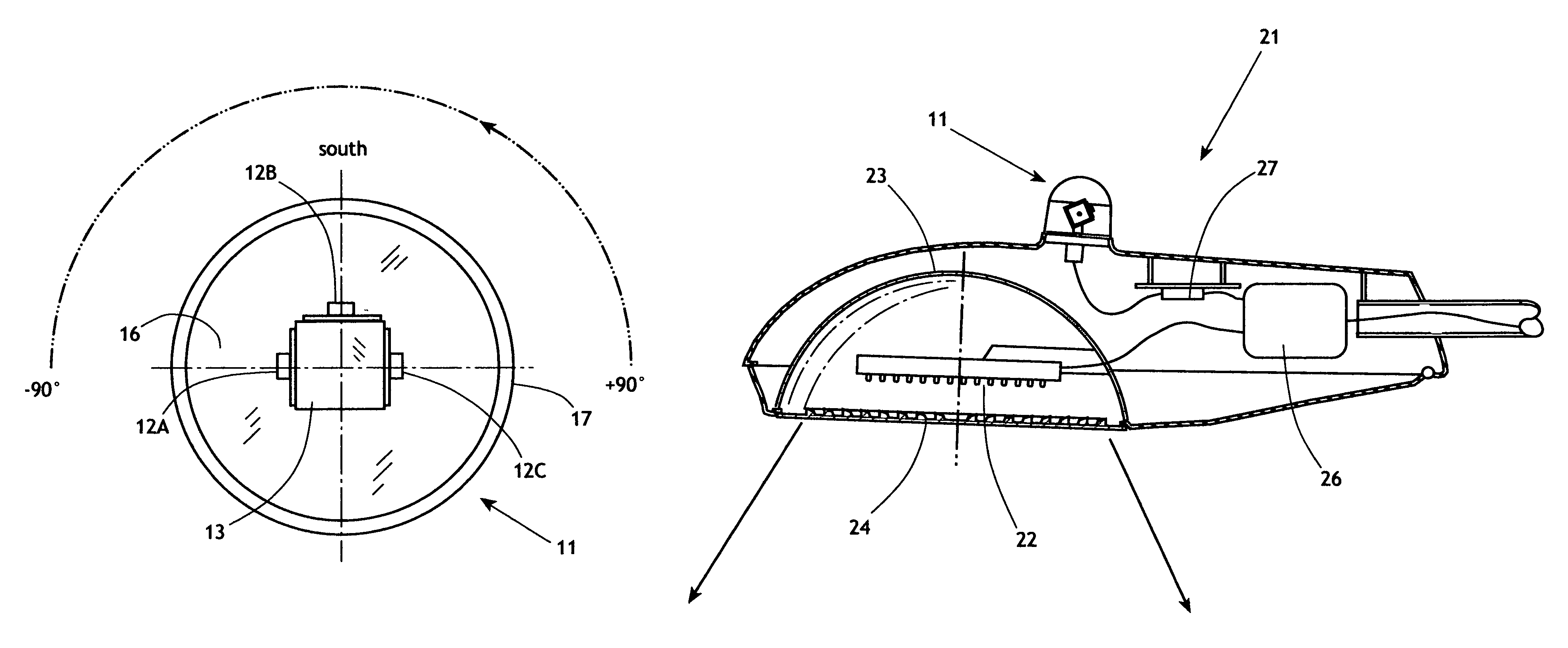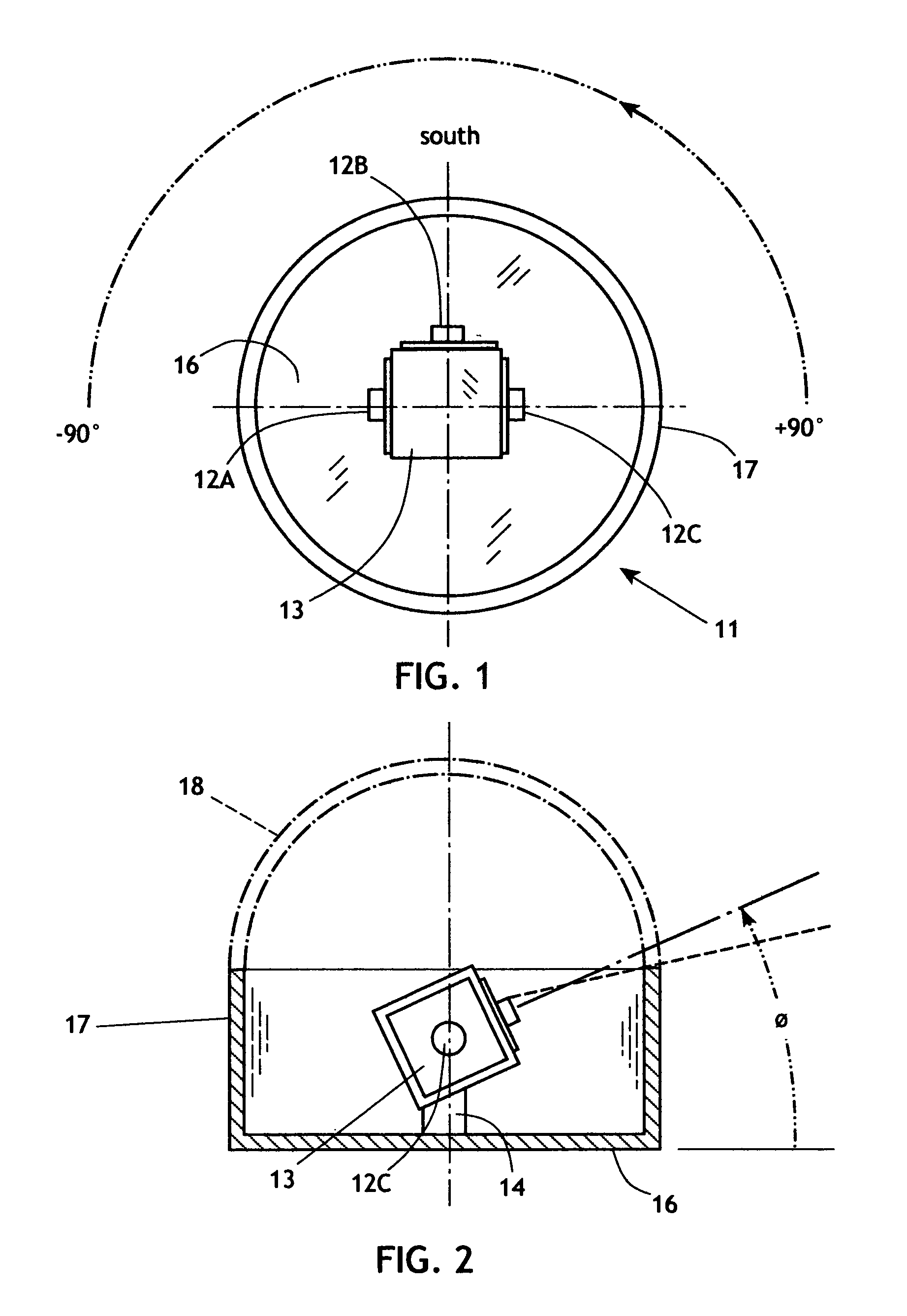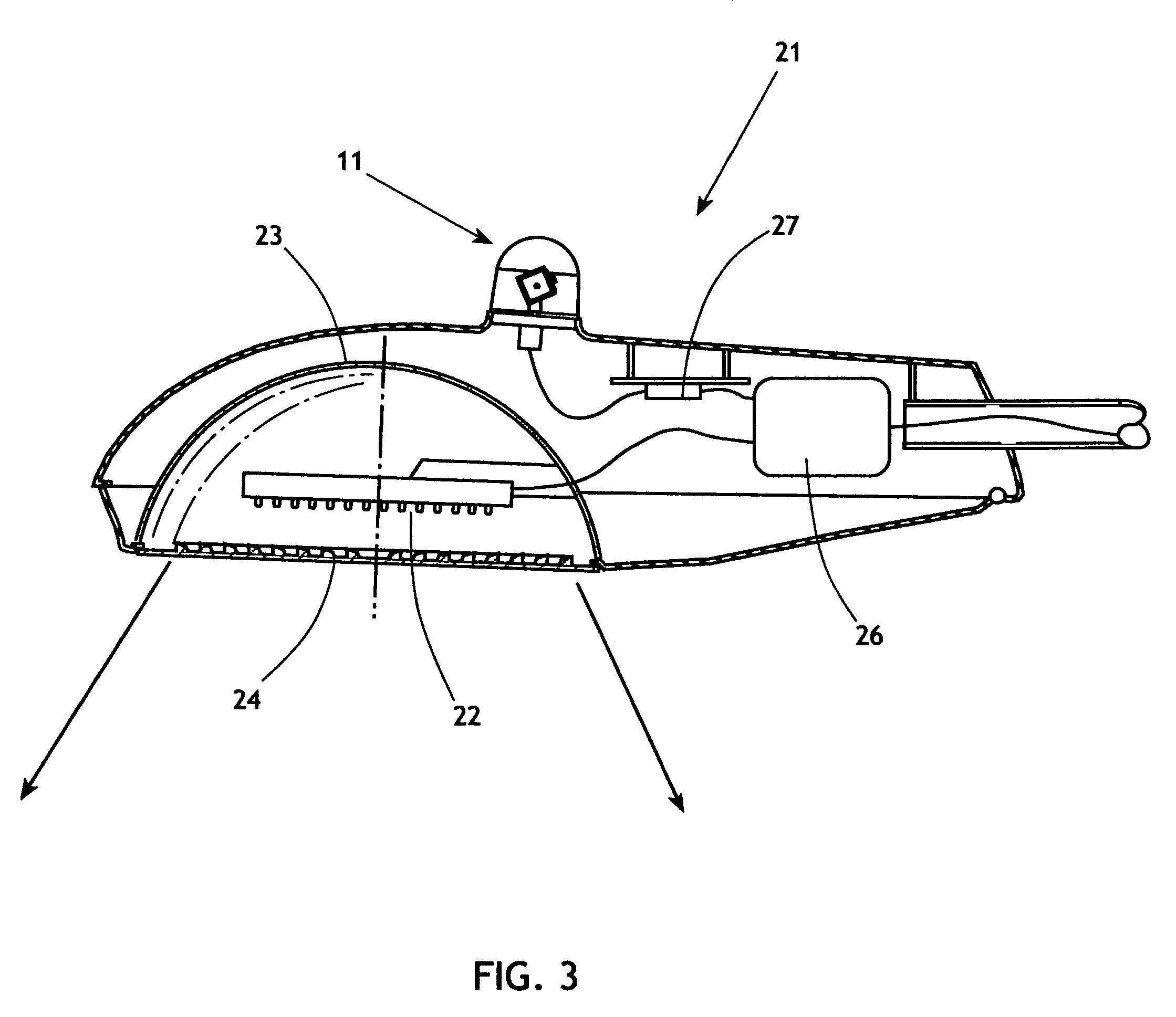Lunar resonant lighting
a technology of resonant lighting and lighting fixtures, applied in the direction of lighting and heating apparatus, coupling device connections, ways, etc., can solve the problems of wasteful large energy waste, waste of lighting fixtures and systems, etc., and achieve the effect of increasing engineering redundancy
- Summary
- Abstract
- Description
- Claims
- Application Information
AI Technical Summary
Benefits of technology
Problems solved by technology
Method used
Image
Examples
Embodiment Construction
[0034]The present invention generally comprises a method and apparatus to control a lighting source such as a streetlight, and to modulate the output of the lighting source so that artificial illumination is reduced when moonlight is available to illuminate the area. As described below, the apparatus of the invention includes a sensor assembly for detecting moonlight in the night sky, an electronic circuit for processing the sensor signals in combination with moonrise and moonset data, and modulating the power applied to the lighting source in response to the intensity of the incident moonlight.
[0035]With regard to FIGS. 1 and 2, the sensor assembly 11 of the invention generally comprises a sensor array comprised of a trio of photodiodes 12A, 12B, and 12C support on a movable sensor housing 13. The photodiodes are directed outwardly from the housing 13 in a common plane, and are aimed at axes separated by 90°, as shown in FIG. 1. The housing 13 is supported on an adjustable mount 14...
PUM
 Login to View More
Login to View More Abstract
Description
Claims
Application Information
 Login to View More
Login to View More - R&D
- Intellectual Property
- Life Sciences
- Materials
- Tech Scout
- Unparalleled Data Quality
- Higher Quality Content
- 60% Fewer Hallucinations
Browse by: Latest US Patents, China's latest patents, Technical Efficacy Thesaurus, Application Domain, Technology Topic, Popular Technical Reports.
© 2025 PatSnap. All rights reserved.Legal|Privacy policy|Modern Slavery Act Transparency Statement|Sitemap|About US| Contact US: help@patsnap.com



